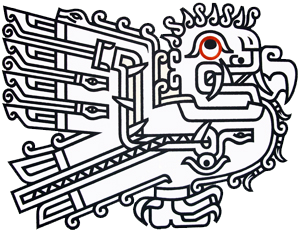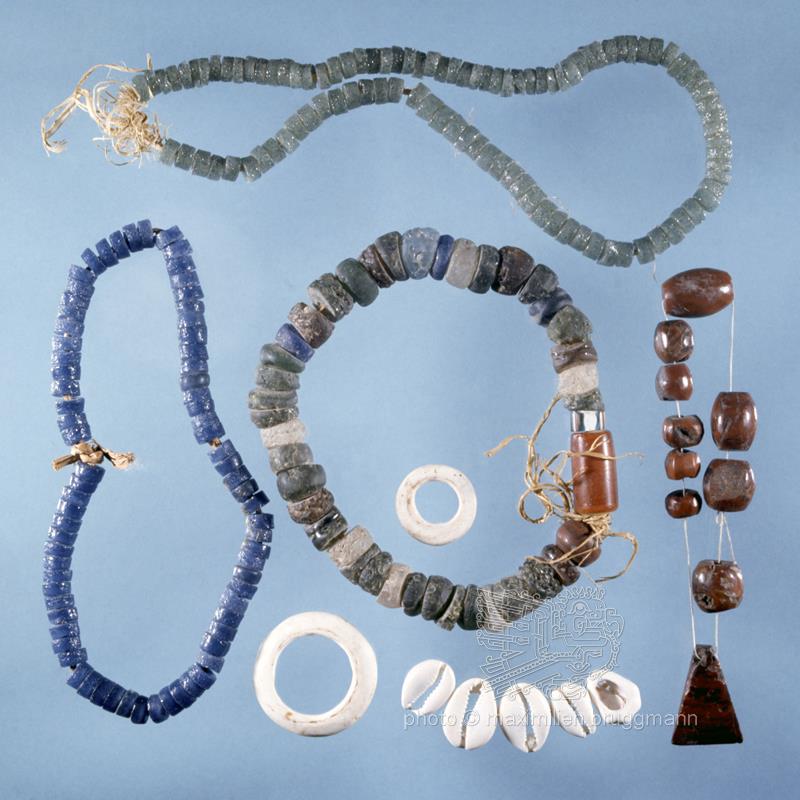Description
The tumulus represents the simplest type of the great series of Saharan funerary monuments, known as "Libyco-Berber" or, better still, "pre-Islamic". From this period onwards, there was a change in the choice of materials used to make jewellery, the first glass paste beads, imported marine shells, cones and cypresses in particular, and carnelian for the manufacture of beads made according to a new technique, as the hole is straighter and the polishing perfect. The necklace in the centre is from this period, while the other two, above and to the left, show the persistence of the glass paste beads, which are often coloured blue, until the present day. (IFAN Collection, Dakar, Senegal) - 1969
Description
The tumulus represents the simplest type of the great series of Saharan funerary monuments, known as "Libyco-Berber" or, better still, "pre-Islamic". From this period onwards, there was a change in the choice of materials used to make jewellery, the first glass paste beads, imported marine shells, cones and cypresses in particular, and carnelian for the manufacture of beads made according to a new technique, as the hole is straighter and the polishing perfect. The necklace in the centre is from this period, while the other two, above and to the left, show the persistence of the glass paste beads, which are often coloured blue, until the present day. (IFAN Collection, Dakar, Senegal) - 1969





